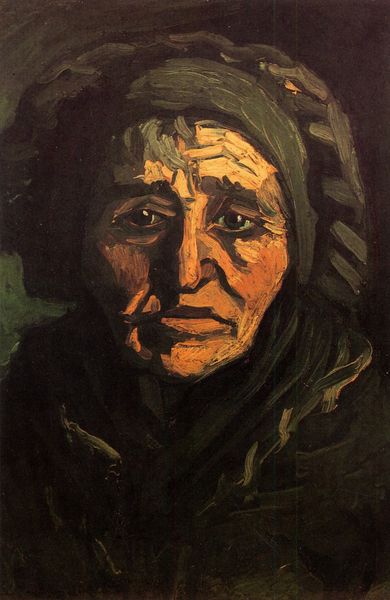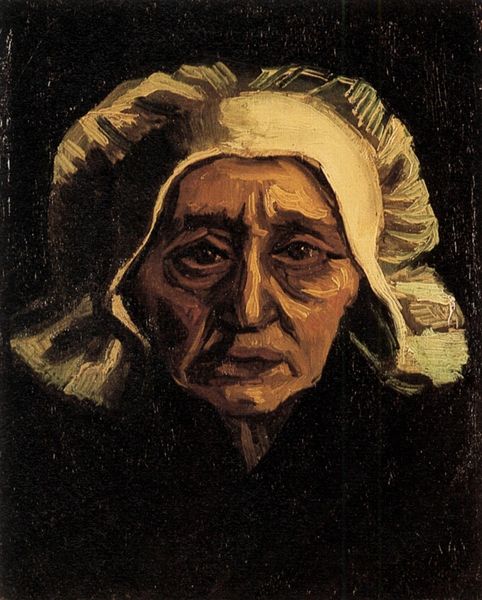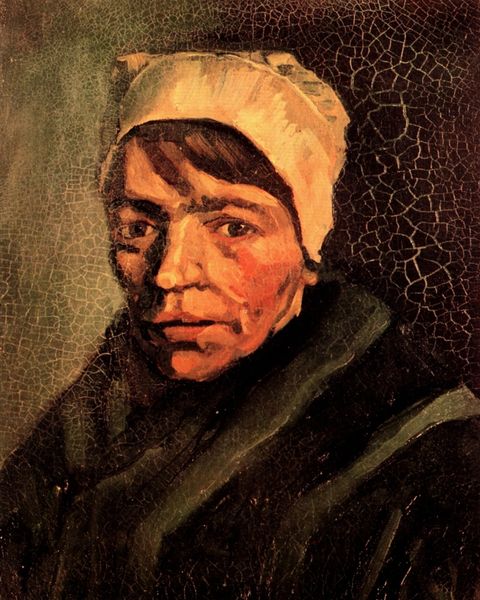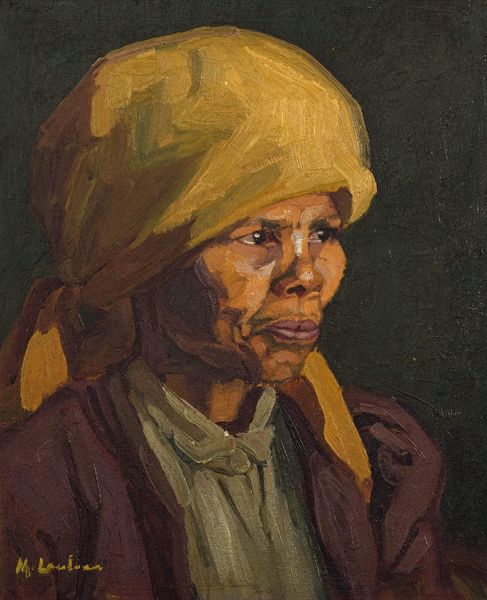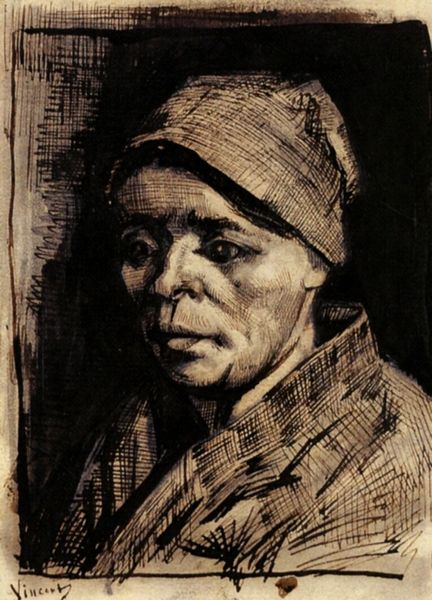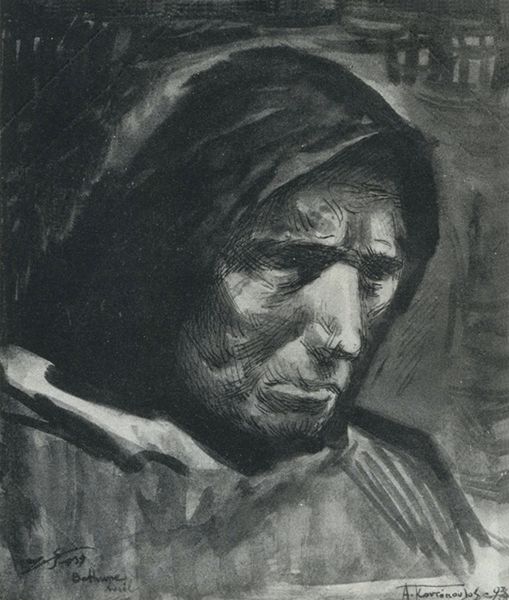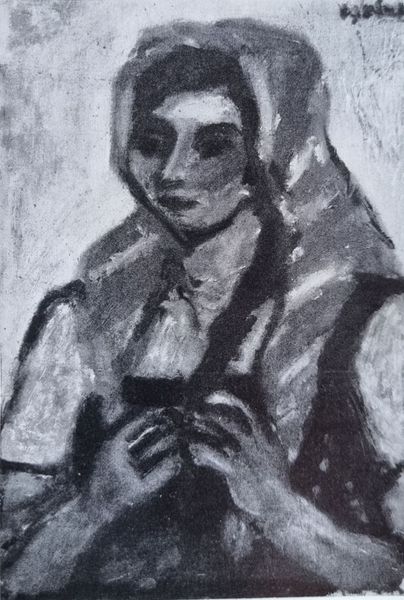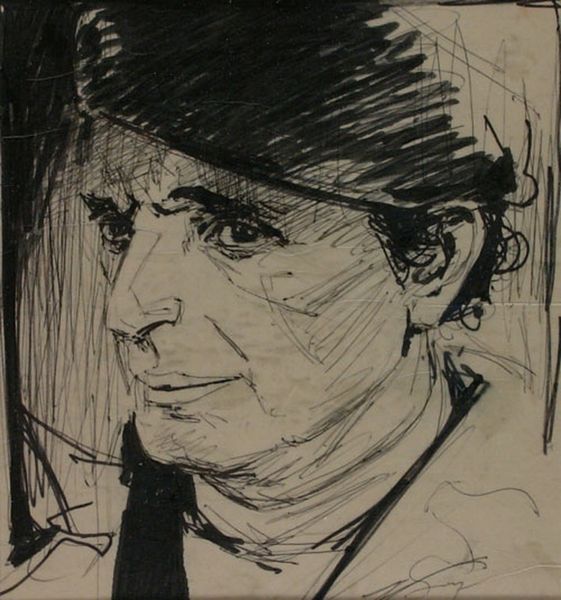
Head of a Peasant Woman with White Cap 1885
0:00
0:00
vincentvangogh
E.G. Bührle Foundation, Zürich, Switzerland
painting, oil-paint
#
portrait
#
painting
#
oil-paint
#
post-impressionism
#
realism
Copyright: Public domain
Curator: Ah, there's such an unflinching directness in this piece. Editor: It certainly hits you right away. The stark contrast of the dark background with her face makes it impossible to ignore. What’s your first impression? Curator: Almost a feeling of… empathy mixed with discomfort? She's staring into me, into anyone who looks at this, with those piercing eyes. A little corner of my soul twists. But maybe it’s also that I feel recognized somehow? Editor: Recognition feels right. We're looking at Van Gogh's "Head of a Peasant Woman with White Cap," an oil painting from 1885, during his Nuenen period in the Netherlands. These portraits served as studies of local people, farm laborers mainly. And though Van Gogh himself came from privilege, there was always a desire to bridge that divide. Curator: He gets right into her wrinkles. She’s…real, undeniably so, which isn't always easy in portraiture. Not romanticized. Did he find something of himself in her struggle? You know how some artists use portraits for inner reckoning. Editor: Perhaps. During that time, his work focused on the harsh realities faced by peasants. Van Gogh was developing his social consciousness alongside his artistic technique. Consider what this image is *not*: it’s not some idyllic scene. It confronts the viewer with the difficult lives of working-class women at that time. We’re seeing more than just her “head." Curator: Definitely! I'm really grabbed by how her face seems to be fighting to break out of the shadows. It is so interesting how he uses oil paints with quick and energetic brushstrokes, the heaviness contrasting beautifully with the fragility of her face. Is there a deeper comment here? Editor: He isn’t flattering her, but humanizing her. Post-impressionist realism is doing its work of revealing her existence and labor as a stark, beautiful fact. There’s an implicit critique of social structures and power, even. Van Gogh elevates his sitter through artistic engagement. He gives dignity and makes it un-ignorable. Curator: It gives you plenty to chew on. I will look at the brushstrokes now and consider how she stared at Van Gogh. Editor: Likewise, it invites consideration on our place within a continuous story of inequality.
Comments
No comments
Be the first to comment and join the conversation on the ultimate creative platform.
